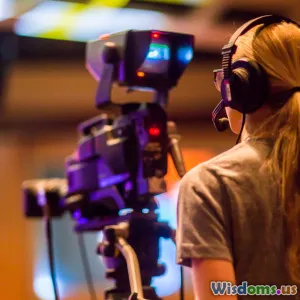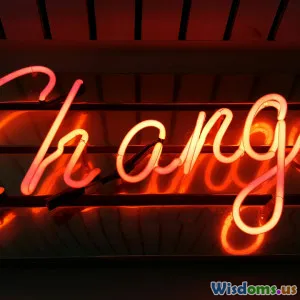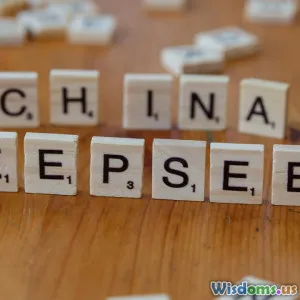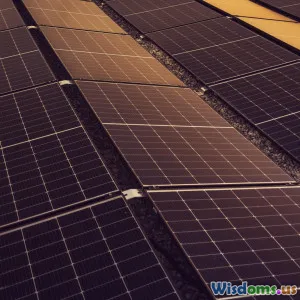
AI and the Evolution of Digital Media
9 min read Explore how AI revolutionizes photography and filmmaking, transforming digital media with groundbreaking tools and creative potential. (0 Reviews)
AI and the Evolution of Digital Media in Photography & Filmmaking
Introduction
Digital media has undergone seismic shifts over the last few decades, shaped by rapid advancements in technology. Among the most transformative forces today is artificial intelligence (AI), which is not just automating routine tasks but also unlocking new creative possibilities, particularly in photography and filmmaking. Imagine a world where an AI can automatically enhance the nuances of a photo to evoke deeper emotion or generate thousands of storyboard options for a film director in minutes. This is no longer science fiction—instead, AI is quietly and profoundly redefining the visual storytelling landscape. In this article, we explore the multifaceted evolution of photography and filmmaking through the lens of AI, shedding light on tools, trends, challenges, and the exciting future ahead.
AI-Driven Transformation in Photography
Intelligent Image Enhancement and Editing
One of the most immediate ways AI has influenced photography is through smart editing tools. Platforms like Adobe Photoshop with Adobe Sensei AI, Skylum Luminar AI, and DxO PhotoLab use sophisticated machine learning algorithms to analyze images and make adjustments that previously took hours of meticulous human effort.
For example, AI can detect and enhance faces, adjust lighting and shadows, correct distortions, and even replace skies seamlessly, all with minimal user input. Luminar AI’s "Sky AI" feature can transform a dull, overcast sky into a vibrant sunset automatically, saving photographers significant editing time.
Such AI applications are not mere time-savers but creative enablers, allowing photographers to experiment with aesthetics and styles with ease. According to a 2023 report by Grand View Research, the AI in image editing market is projected to grow at a compound annual growth rate (CAGR) of over 26% between 2024 and 2030—demonstrating industry confidence in AI-driven tools.
Automated Curation and Organization
As photographers accumulate vast catalogues of photographs, managing and curating them becomes a logistical nightmare. AI-powered image recognition services, such as Google Photos and Apple’s Photos app, identify objects, people, and even emotions within images, auto-tagging them to streamline organization.
The National Geographic Society reports that automated tagging helped its photographers reduce time spent on archival management by 40%. This lets artists focus on creativity rather than tedious file sorting.
Filmmaking: AI as a Creative Collaborator
Revolutionizing Pre-Production and Storyboarding
AI's impact on filmmaking extends well beyond post-production. Pre-production, traditionally one of the most manually intensive phases, benefits from AI-powered storyboarding tools like Shotdeck and Artbreeder. These platforms assist directors and cinematographers in visualizing scenes quickly by generating mood boards or conceptual art based on textual or image inputs.
Moreover, the integration of natural language processing (NLP) enables AI-driven script analysis, identifying plot holes, pacing issues, or even suggesting thematic enhancements. Film studios now leverage algorithms to predict audience engagement based on script analysis, which informed decisions during production planning on blockbuster films such as "Avengers: Endgame" and "Star Wars: The Last Jedi." Although not solely AI-driven, these analytics incorporate machine learning components to optimize storytelling.
AI in Cinematography and Effects
AI-powered cameras with neural network capabilities are now able to track subjects accurately, improve focus in difficult lighting, and even simulate professional-grade lenses via software. For instance, RED’s Hydrogen One smartphone uses AI to enhance depth perception in video.
In post-production, AI accelerates visual effects (VFX) tasks—such as rotoscoping, a process traditionally done frame-by-frame by artists—to mask objects and apply CGI. Adobe After Effects' Content-Aware Fill uses AI to remove unwanted objects from footage automatically, dramatically reducing timelines and costs.
Deepfake technology, a double-edged sword, leverages AI to create hyper-realistic face swaps and voice synthesis. While often controversial due to ethical implications, it has legitimate applications in CGI de-aging, stunt double replacements, and dubbing.
AI and Virtual Production
The pandemic accelerated virtual production techniques, which blend real-time CGI environments with live filming. AI enhances these environments by generating photorealistic backgrounds instantly and adapting lighting in response to actors' movements.
Famous examples include the production of "The Mandalorian," which used LED volume stages combined with AI to simulate immersive alien worlds. This technique reduces location costs and allows unparalleled creative flexibility.
Challenges and Ethical Considerations
With great power comes great responsibility. AI's rise in digital media raises critical ethical questions:
- Creative ownership: When AI assists or generates content, who owns the rights—the human creator or the algorithm’s developer?
- Deepfake misuse: AI-generated fake videos can spread disinformation or violate privacy.
- Job Displacement: Automation threatens some traditional roles in editing and post-production.
Industry groups and artists advocate for transparent AI practices and updated copyright laws to protect creators while embracing innovation.
Looking Ahead: The Future of AI in Visual Storytelling
AI’s journey in digital media is only beginning. Emerging fields like generative AI, exemplified by tools such as DALL·E and Midjourney, enable artists to generate images and short sequences from textual descriptions, opening doors to new forms of pre-visualization or even standalone artistic expressions.
Similarly, AI-driven interactive storytelling, blending gaming and cinematics, promises personalized narratives adapting in real-time to audience reactions.
The future envisions a harmonious collaboration where AI enhances human creativity without supplanting the unique perspectives and emotional depth that only humans bring to art.
Conclusion
AI is transforming the landscape of photography and filmmaking with tools that enhance creativity, streamline production, and expand storytelling horizons. From AI-powered image enhancement to virtual production and script analysis, digital media practitioners have unprecedented capabilities at their fingertips. While ethical challenges persist, the positives of increased efficiency and new creative frontiers paint an exciting future for visual storytellers. Embracing this revolution empowers artists and filmmakers to reimagine how stories can be told, seen, and felt in an ever-evolving digital world.
References
- Grand View Research (2023). AI in Image Editing Market Size, Share & Trends.
- National Geographic Society. (2022). Digital Media Archive Innovations.
- Adobe Creative Cloud Blog. (2023). AI-Assisted Post Production Tools.
- "The Mandalorian" Virtual Production Behind the Scenes, Lucasfilm, 2020.
- RED Digital Cinema (2023). Hydrogen One AI Capabilities.
Rate the Post
User Reviews
Popular Posts




















